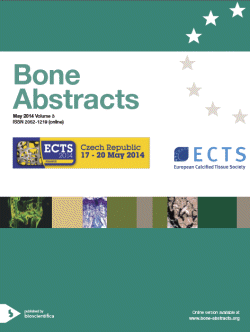Searchable abstracts of presentations at key conferences on calcified tissues

European Calcified Tissue Society Congress 2014
Prague,
Czech Republic
17 May 2014 - 20 May 2014

European Calcified Tissue Society Annual Congress, 17 - 20 May 2014; Prague, Czech Republic



